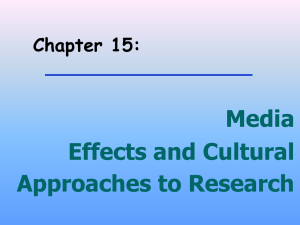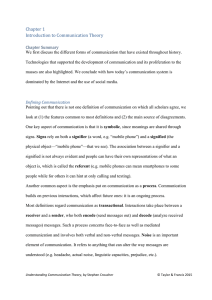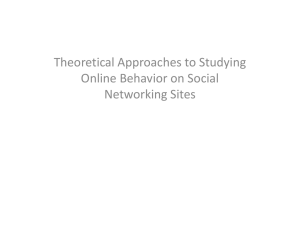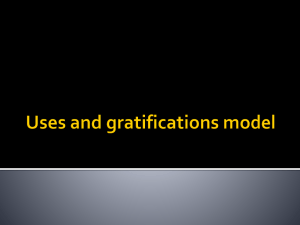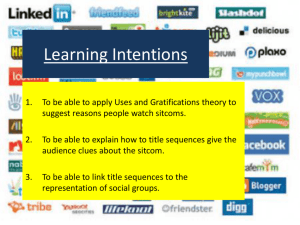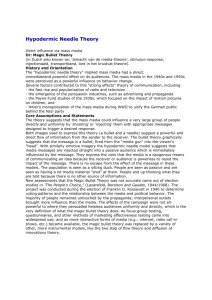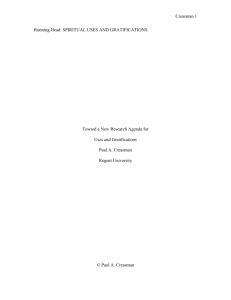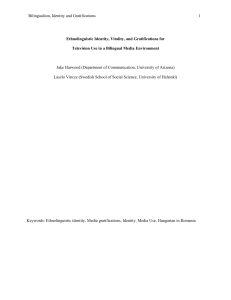Mass Communication
advertisement
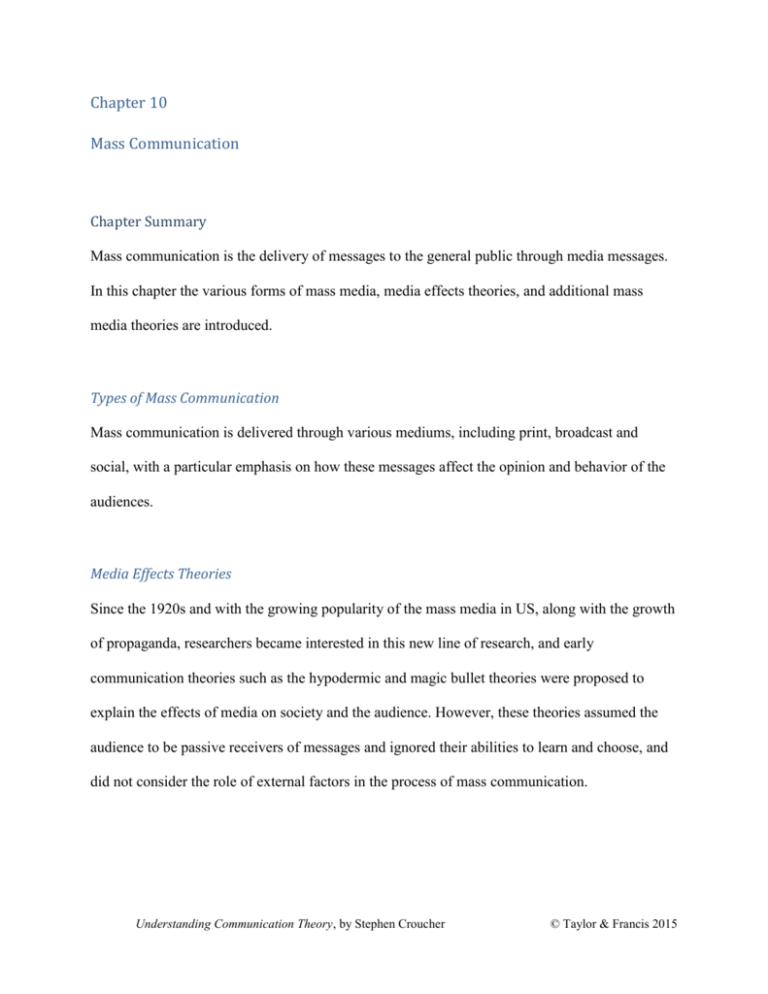
Chapter 10 Mass Communication Chapter Summary Mass communication is the delivery of messages to the general public through media messages. In this chapter the various forms of mass media, media effects theories, and additional mass media theories are introduced. Types of Mass Communication Mass communication is delivered through various mediums, including print, broadcast and social, with a particular emphasis on how these messages affect the opinion and behavior of the audiences. Media Effects Theories Since the 1920s and with the growing popularity of the mass media in US, along with the growth of propaganda, researchers became interested in this new line of research, and early communication theories such as the hypodermic and magic bullet theories were proposed to explain the effects of media on society and the audience. However, these theories assumed the audience to be passive receivers of messages and ignored their abilities to learn and choose, and did not consider the role of external factors in the process of mass communication. Understanding Communication Theory, by Stephen Croucher © Taylor & Francis 2015 Social Cognitive Theory and Uses and Gratifications Theory Taking into consideration the relationship between learning about the surrounding world and the messages from the media paved the way for theories such as social cognitive theory. Resulting from the social learning theory, social cognitive theory describes the formation and development of certain behaviors and behavioral intervention strategies among individuals. Various environmental, social, and demographic elements can affect behavior. Observational learning is another effective element in this theory, which explains the process of learning from observing a model such a family member or friends and in the mass media scale, celebrities, politicians, etc. Self-efficacy is another considerable notion of social cognitive theory. Previous studies in this field have shown that exposure to mass media such as TV or video games can model the same exposed behaviors among audiences. Another significant theory of mass communication is uses and gratifications theory (U&G). This approach to mass media consumption assumes that people have different patterns of media use because they have different social and psychological needs; accordingly these different use patterns result in different gratifications. Scholars have proposed various typologies of the gratifications that individuals seek out of media use. The distinction between gratification sought and gratification obtained is an important theoretical development in this theory. Scholars have used U&G in different studies of TV, radio, video games, and online media consumption. This model has been criticized because researchers in this field have not tested the theory wholly, and have given too much credit to an active audience who is believed to be in control of media effects. Another criticism is that U&G does not explicitly explain the decoding mechanism, which differentiates gratifications obtained from gratifications sought. Understanding Communication Theory, by Stephen Croucher © Taylor & Francis 2015 Agenda Setting Theory and Spiral of Silence Theory A popular approach to media studies is to investigate the effects of media on public opinion and how the media manipulate these opinions. Agenda setting theory, one of the most studied theories in this approach, deals with the role of media in determining the mind of the public through focusing on three types of interdepending agendas—media, public, and policy—but for the mass communication researchers, the causal relationship between the media agenda and public agenda is of special importance. According to agenda setting theory, the media, through allocating more time and space to certain topics, indirectly influence the public to think about and pay attention to these topics. However, some elements such as the relevance, importance, and obtrusiveness of the topic, and the audience’s need for attitude can influence the effect of media on the public mindset. This theory also differentiates first-level agenda setting (the issues that are part of public agenda), and second-level agenda setting (how the audience thinks about those issues). Framing, another central notion in this theory, means focusing on special aspects of stories. This theory has been studied vastly. Spiral of silence asserts that when people feel their viewpoints are in minority, they are less willing to express their ideas. Arguments such as being afraid of isolation for different viewpoints, expressing ideas according to the attitudes of others, attempting to express the viewpoint with less risk of isolation and expressing viewpoints similar to the majority viewpoint can help detect a spiral of silence effect in a population. Media could help with recognizing the climate of opinion, that is to detect which viewpoints are in the position of the majority or not. Once individuals recognize their viewpoints are far from the climate they may feel fear of isolation, and this could lead to a spiral of silence. Understanding Communication Theory, by Stephen Croucher © Taylor & Francis 2015
